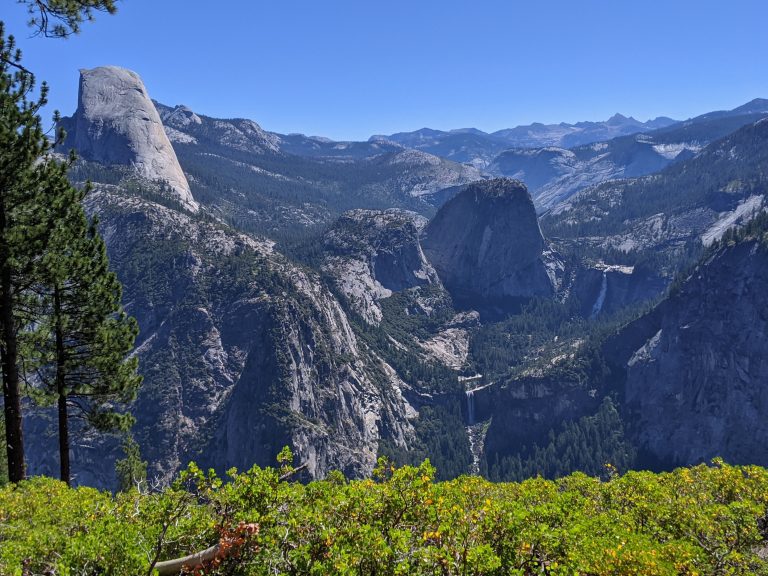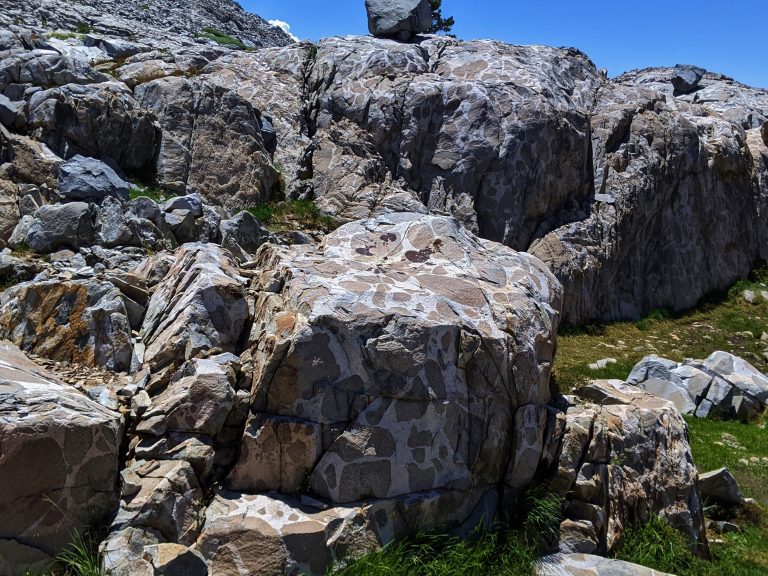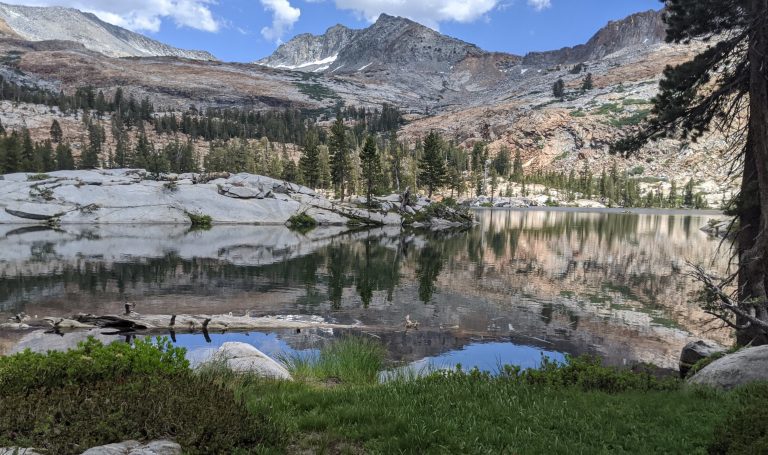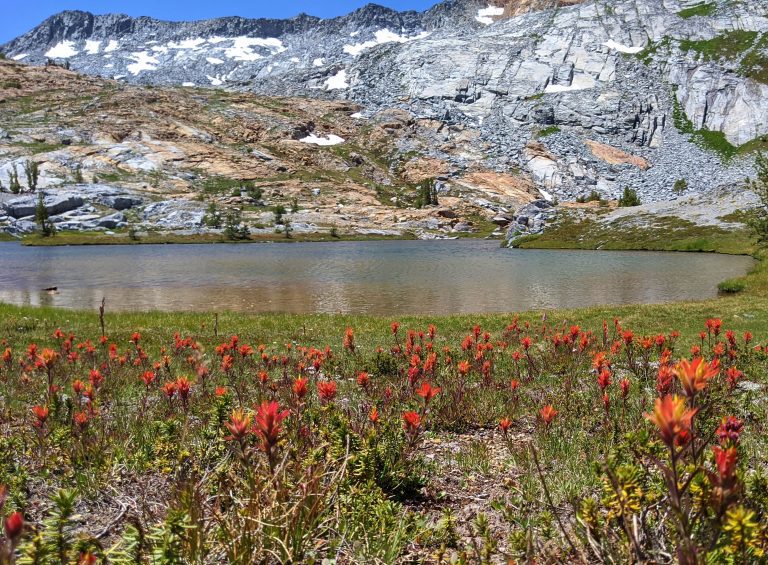Glacier Point is graced with some of the most stunning views in Yosemite National Park, with a panorama of peaks, valleys and waterfalls, including the iconic Half Dome rock formation front and center. There could hardly be a more spectacular start to a multi-day hike. Add to that a plethora of trailheads and potential routes, and there are many options for planning your own trip.
This article is less of a trip report and more of an attempt to inspire anyone interested in an excursion like this to gather your resources, put your thinking cap on, find the patterns and plan your own journey. It’s easy to follow a classic route like the John Muir Trail, but the pleasure of plotting a course based on your own preferences, researching the terrain and elevation profiles, and getting excited about the wonders you might encounter are an enjoyable pastime with many rewards.
Some highlights you may experience are unexpectedly stunning views of the Ritter Range from several high passes, lakes that rival those found in the Tuolumne Meadows area, a sampling of dramatic geologic wonders and the opportunity to explore the headwaters of the Merced River and areas of historic significance.
Trip Planning
If planning your own trip is new for you, take advantage of the traditional and non-traditional tools available. Gather your resources (see links below) and get a Tom Harrison topographic map of Yosemite High Country that you can spread out in front of you. Seeing the entire map of Yosemite will allow certain circular routes to come into focus. You’ll spot famous landmarks that may draw you toward them to experience their wonders or repel you away from the expected crowds. You’ll see how enormous the lightly traveled northern part of the park is and how many trails veer off from Glacier Point Road into the southern reaches.
Dive into a computer program such as Gaia GPS or CalTopo to get a quick look at elevations and different map overlays. You can plot your route to upload to your phone or print. Look at an elevation profile to see if you’ve bitten off too much for a day when you realize that you’ll be climbing 3,000 feet or more. A guidebook such as Elizabeth Wenk’s Top Trails Yosemite or Yosemite National Park: Your Complete Hiking Guide can be very helpful. Check blog reports or YouTube videos for trip reports as well. When you get the basic outline, dive a little deeper to see if you can find creeks or lakes for your campsites or plan where you’ll get your last water before dry camping. You’ll probably crave more maps when you realize that to the north and south, the Yosemite trails merge with numerous trails in other wilderness areas, and if you’re like me, you want to know where they go. And then you’ll want to hike them.
A nice feature of staying in or close to the park is that the logistical challenges of transportation, parking and resupply for long trips are minimized. The easiest is to plan a loop so you can return to your vehicle, but if you make your way to Yosemite Valley or Tuolumne Meadows, you can take public transportation to return to your car (these are subject to change so be sure to check schedules and verify they are running during the times you’ll want to use them).
Southern Yosemite
We started at Glacier Point, but all along Glacier Point Road are other trailheads that cut through meadows and over ridges, resulting in a fine network of trails. This means that there are multiple permit opportunities to access similar terrain and routes. One option is to head south toward Chiquito Pass or Fernandez Pass at the southern park boundary line. You’ll also notice that there’s a big blank spot southeast of Glacier Point that is blocked by the Clark Range. One passage through the Clark Range is Red Peak Pass, so this is a common destination to approach the next basin. To get a historical perspective, read John Muir’s book, “The Mountains of California.” Despite his imperfections, he was a great explorer and his discovery and description of the Merced Glacier above Ottoway Lakes ranks among his best work.
Once you’re over Red Peak Pass, a whole new world opens up with routes that can take you back to Yosemite Valley, over to Tuolumne Meadows or south, out of the park and into Sierra National Forest and the Ansel Adams Wilderness via Isberg Pass or Post Peak Pass. The views of the Ritter range and Minarets to the east offer a dramatically different perspective compared to the usual sightlines from the John Muir Trail.
If you study the routes in the Ansel Adams Wilderness, you’ll see that by dipping southwest, you can loop, within 10 miles, back into Yosemite National Park, visiting some beautiful high alpine lakes along the way. In late season, head for the lakes as streams can dry up and are not reliable sources of water.
Clover Meadow is a major landmark in the Sierra National Forest, with road access and a ranger station. Many loops can be planned from Clover Meadow going into Yosemite or heading east toward Mammoth Lakes. You’ll want the Tom Harrison Ansel Adams Wilderness Map for trip planning originating from Clover Meadow. Note that this area was affected by the 2020 Creek Fire so check whether trails are open.
Sticking with our Yosemite loop, you could choose to visit any number of beautiful lakes in Sierra National Forest and re-enter Yosemite via Fernandez Pass. From Breeze Lake (named after William Breeze, who helped map the area, and the weather often matches the name), at the headwaters of the Merced River, look up to the ridge to spot Sing Peak, named after Ty Sing, one of the many Chinese Americans who supported the exploration and building of the park. For 28 years, Sing was the chef for the field kitchen that supported expeditions of the United States Geological Survey. When you’re ready to tackle some easy cross-country navigation, Sing Peak could be a destination. From Moraine Meadow at the headwaters of the Merced River, you can plot a route back to your starting point that differs from where you began.
Whether you’re a new or experienced backpacker, there are loops and routes in Yosemite that are short or long, easy or challenging, but all feature unique terrain and stunning views. All you need to find a route is to get the map out and start planning your next adventure.






